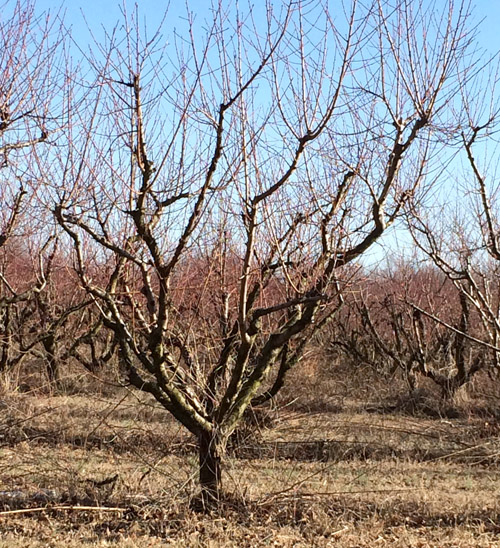Danelle Cutting: Peach pruning requires a plan
Published 12:00 am Friday, February 20, 2015

- This mature peach tree at Huffman's Orchard shows how it was pruned to have an open center.
As most of my readers know, I have a passion for fruit trees, specifically peach trees.
Growing peaches can be very rewarding, but you must know how to care for them properly to get the fruit quality that you want. As with most fruit trees, if you put in the time, they will reward you. If you neglect them, let’s just say you get the fruit quality you deserve.
It is important to train your peaches from the start so that you will be more likely to have optimum yields. Most people are shocked to learn how early peaches are pruned in a commercial operation; pruning starts at planting. Before I talk about how to prune, it is important to have the proper tools.
To get started with pruning, you will need pruning shears, pruning loppers, a pruning saw, gloves and some disinfectant like a bleach-water solution or liquid Lysol to sanitize after pruning. Make sure your tools are clean. Using dirty tools can cause the tools to not work properly and can also cause tearing instead of a clean cut, which can encourage disease or slower healing. If you start pruning the trees at an early age, you can cut your tools down to only the shears and loppers.
For peaches, we prune using the open center method. Since we start pruning after planting, we head/cut the whip (young peach tree) 30 to 34 inches above the soil. This encourages branching.
Once that has happened and you get to mid-February of the next winter, select the best three to four scaffolds (branches) that are placed all around the leader. The lowest scaffold should be at least 24 inches above the soil surface; any lower branches need to be removed. Once you have selected your scaffolding branches, remove the leader right above the highest scaffold.
Once you have your peaches trained, you will need to do routine maintenance. Part of the maintenance is removing water sprouts and suckers. Water sprouts are vigorous, upright growth on the scaffolds, and suckers are from the rootstock.
If you leave the suckers and allow them to produce fruit, you will probably find the taste to be less than satisfactory since the rootstock was only developed for health and longevity. It is also important to remove branches that are rubbing or scraping against each other. If you need to reduce height, you can prune the branches to an outward facing bud.
You can always remove dead, diseased or damaged limbs throughout the year. If you have disease, it is important to clean and dry your tools between each cut with clean towels and a disinfectant solution.
All pruning methods help increase light for better fruit production and airflow to reduce disease problems. This is important if you want good quality fruit.
For more information on pruning peaches, contact your local Extension Agent, Danelle Cutting, at 704-216-8970.
Or, watch a video on pruning peaches: http://peaches.ces.ncsu.edu/peaches-movies/





